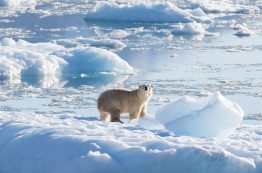Forecasters are predicting a “three-peat La Niña” this year. This will be the third winter in a row that the Pacific Ocean has been in a La Niña cycle, something that’s happened only twice before in records going back to 1950. New research led by the University of Washington offers a possible explanation. The study, recently published in Geophysical Research Letters, suggests that climate change is, in the short term, favoring La Niñas.
Read more at UW News »Heat-related mortality risk is widespread across Washington state, study shows
Heat-related deaths are an issue across Washington state, and they occur even in regions that typically have milder climates, according to a University of Washington study published Aug. 30 in the journal Atmosphere. This is the most extensive study yet of heat-related mortality in Washington state, and the first to look beyond the major population centers to include rural areas. Statewide, the odds of dying were on average 8% higher in recent decades on days when the combination of temperature and humidity, known as the humidex, was in the top 1% of recorded values at that location, compared to a day with a mid-range value for humidex.
Read more at UW News »‘Dangerous’ and ‘extremely dangerous’ heat stress to become more common by 2100
Record-breaking heat waves have occurred recently from Delhi to the Pacific Northwest, and the number of these deadly events is expected to increase. New research from the University of Washington and Harvard University gives a range of heat impacts worldwide by the end of this century, depending on future emissions of greenhouse gases. The study was published Aug. 25 in the open-access journal Communications Earth & Environment.
Read more at UW News »New study calculates retreat of glacier edges in Alaska’s Kenai Fjords National Park
As glaciers worldwide retreat due to climate change, managers of national parks need to know what’s on the horizon to prepare for the future. A new study from the University of Washington and the National Park Service measures 38 years of change for glaciers in Kenai Fjords National Park, a stunning jewel about two hours south of Anchorage. The study, published Aug.
Read more at UW News »Newly documented population of polar bears in Southeast Greenland sheds light on the species’ future in a warming Arctic
Scientists have documented a previously unknown subpopulation of polar bears living in Southeast Greenland. The polar bears survive with limited access to sea ice by hunting from freshwater ice that pours into the ocean from Greenland’s glaciers. Because this isolated population is genetically distinct and uniquely adapted to its environment, studying it could shed light on the future of the species in a warming Arctic.
Read more at UW News »





